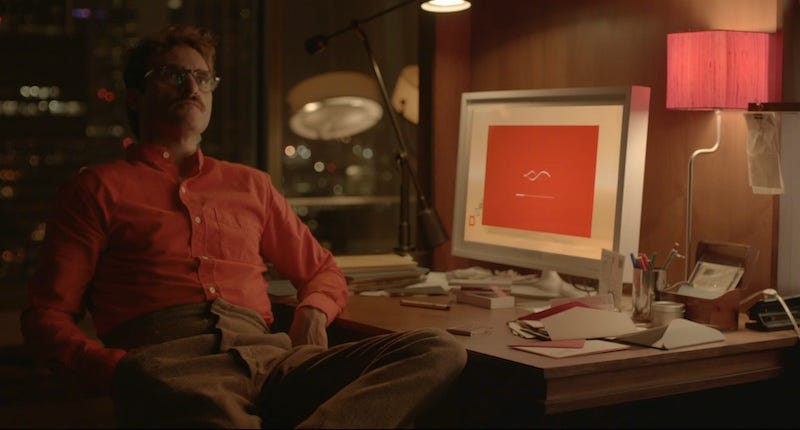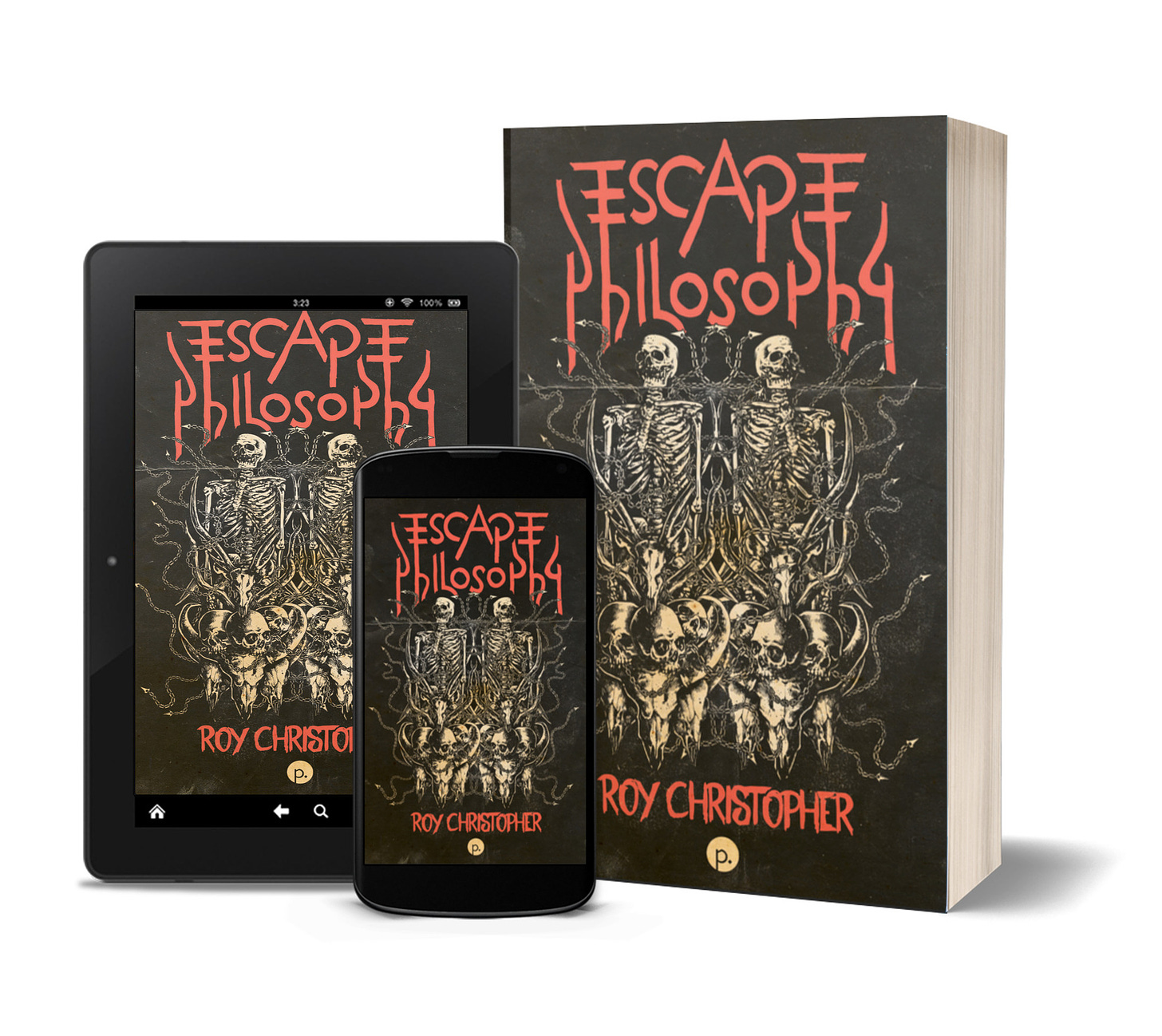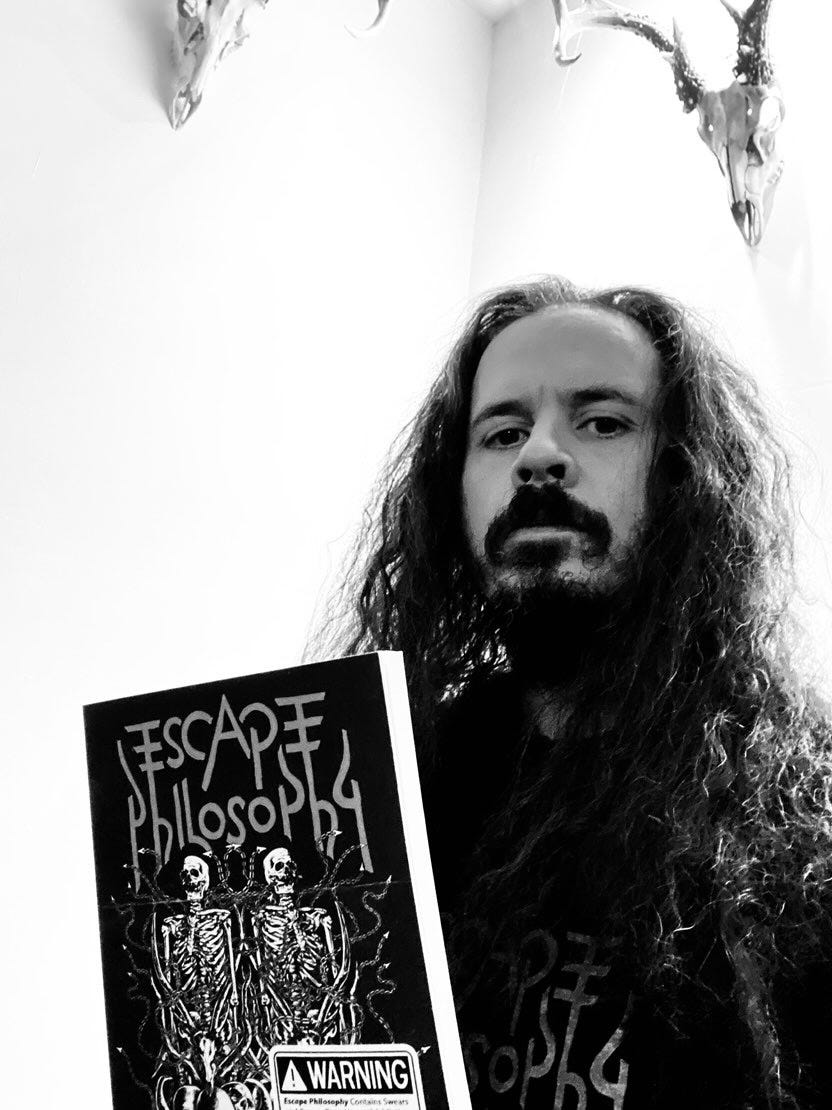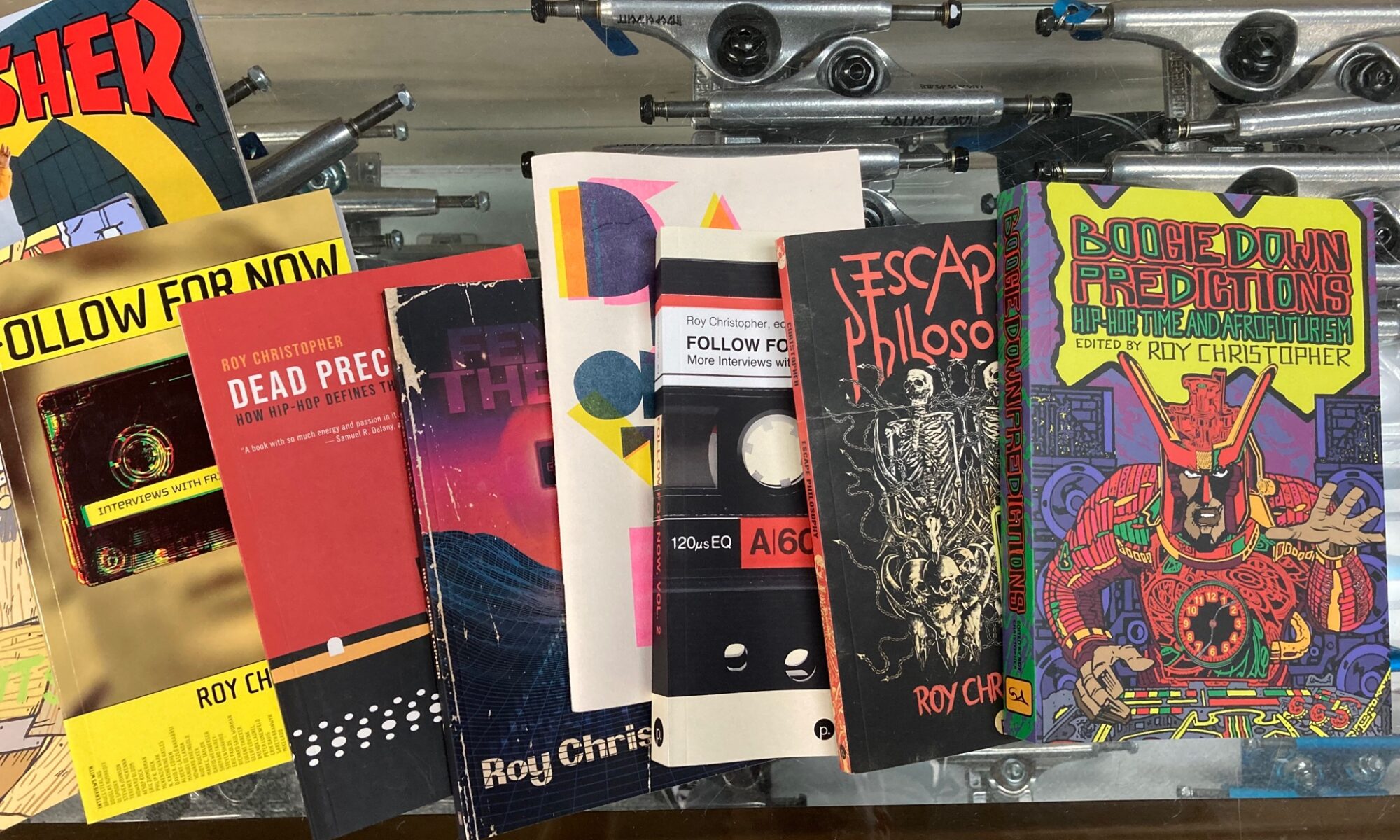“Welcome to the world of Pinecone Computers,” Miles Harding (played by Lenny Von Dohlen) reads from a computer manual in Electric Dreams (1984). “This model will learn with you, so type your name and press Enter key to begin.”[1] Since the big-screen tales of the 1980s PC-era, the idea of machines merging with humans has been a tenacious trope in popular culture. In Tron (1982) Kevin Flynn (played by Jeff Bridges) was sucked through a laser into the digital realm. Wired to the testosterone, the hormone-driven juvenile geniuses of Weird Science (1985) set to work making the woman of their dreams. WarGames (1983) famously pit suburban whiz-kids against a machine hell-bent on launching global thermonuclear war. In Electric Dreams (1984), which is admittedly as much montage as it is movie, Miles (von Dohlen, who would go on to play the agoraphobic recluse Harold Smith in Twin Peaks, who kept obsessive journals of the towns-folks’ innermost thoughts and dreams) attempts to navigate a bizarre love triangle between him, his comely neighbor, and his new computer.

From the jealous machine to falling in love with the machine, the theme remains pervasive. As artificial-intelligence researcher Ray Kurzweil writes of Spike Jonze’s 2013 movie Her, “Jonze introduces another idea that I have written about […] namely, AIs creating an avatar of a deceased person based on their writings, other artifacts and people’s memories of that person.”[2] In the near future of Her, Theodore Twombly (played by Joaquin Phoenix) writes letters for a living, letters between fathers and daughters, long-distance lovers, husbands, wives, and others. In doing so, he is especially susceptible to the power of narrative himself since his job involves the constant creation of believable, vicarious stories. His ability to immerse himself in the stories of others makes it that much easier for him to get lost in the love of his operating system, Samantha (voiced by Scarlett Johansson), as she constructs narratives to create her personality, and thereby, their relationship.
Cognitive scientist Douglas Hofstadter calls our imbuing machines with more intelligence than they have—even when we know better—“The ELIZA Effect,” after Joseph Weizenbaum’s text-based psychoanalytic computer program, ELIZA. Hofstadter writes, “the most superficial of syntactic tricks convinced some people who interacted with ELIZA that the program actually understood everything that they were saying, sympathized with them, even empathized with them.”[3] ELIZA was written at MIT by Weizenbaum in the mid-1960s, but its effects linger on. “Like a tenacious virus that constantly mutates,” Hofstadter continues, “the Eliza effect seems to crop up over and over again in AI in ever-fresh disguises, and in subtler and subtler forms.”[4] In the first chapter of Sherry Turkle’s Alone Together, she extends the idea to our amenability to new technologies, including artificial intelligence, embodied or otherwise: “and true to the ELIZA effect, this is not so much because the robots are ready but because we are.”[5]

More germane to Jonze’s Her is a program called KARI, which stands for “Knowledge Acquiring and Response Intelligence.” According to Dominic Pettman’s first and only conversation with KARI, as described in his book, Look at the Bunny, there’s a long way to go before any of us are falling in love with our computers. After interacting with a similar bot online, Jonze agrees. “For the first, maybe, twenty seconds of it,” he says, “I had this real buzz—I’d say ‘Hey, hello,’ and it would say ‘Hey, how are you?,’ and it was like whoa… this is trippy. After twenty seconds, it quickly fell apart and you realized how it actually works, and it wasn’t that impressive. But it was still, for twenty seconds, really exciting. The more people that talked to it, the smarter it got.” The author James Gleick comes to the conceit from the other side, writing, “I’d say Her is a movie about (the education of) an interesting woman who falls in love with a man who, though sweet, is mired in biology.” At one point in the movie, Samantha imagines the same fate for herself: “I could feel the weight of my body, and I was even fantasizing that I had an itch on my back—(she laughs) and I imagined that you scratched it for me—this is so embarrassing.” The dual feelings of being duped by technology and mired in biology sit on the cusp of the corporeal conundrum of what it means to be human, to have not only consciousness but also to have a body, as well as what having a body means.[6]
Mechanical Matrimony
Where some see the whole mess of bodies and machines as one, big system. Others picture the airwaves themselves as extensions. “Telepresence,” as envisioned by Pat Gunkel, Marvin Minsky, and others, sets out to achieve a sense of being there, transferring an embodied experience across space via telephone lines, satellites, and sensory feedback loops.[7] It sounds quaint in world where working from home is normal for many and at least an option for others, but Marshall McLuhan was writing about it in the 1960s, and Minsky and his lot were working on it in the 1970s.
Still others imagine a much more deliberate merging of the biological and the mechanical, postulating an uploading of human consciousness into the machines themselves. Known in robotic and artificial intelligence circles as “The Moravec Transfer,” its namesake, the roboticist Hans Moravec, describes a human brain being uploaded, neuron by neuron, until it exists unperturbed inside a machine.[8] But Moravec wasn’t the first to imagine such a transition. The cyberpunk novelist and mathematician Rudy Rucker outlined the process in his 1982 novel, Software. “It took me nearly a year to really figure out the idea,” he writes, “simple as it now seems. I was studying the philosophy of computation at the University of Heidelberg, reading and pondering the essays of Alan Turing and Kurt Gödel.”[9] Turing was an early inventor of computing systems and AI, best known for the Turing test, whereby an AI is considered to be truly thinking like a human if it can fool a human into thinking so. Gödel was a logician and mathematician, best known for his incompleteness theorem. Both were heavily influential on the core concepts of computing and artificial intelligence. “It’s some serious shit,” Rucker writes of the process. “But I chose to present it in cyberpunk format. So, no po-faced serious, analytic-type, high literary mandarins are ever gonna take my work seriously.”[10] In Rucker’s story, a robot saves its creator by uploading his consciousness into a robot.
NASA’s own Robert Jastrow wrote in 1984 that uploading our minds into machines is the be-all of evolution and would make us immortal. He wrote,
at last the human brain, ensconced in a computer, has been liberated from the weakness of the mortal flesh. […] The machine is its body; it is the machine’s mind. […] It seems to me that this must be the mature form of intelligent life in the Universe. Housed in indestructible lattices of silicon, and no longer constrained in the span of its years by the life and death cycle of a biological organism, such a kind of life could live forever.[11]
In the 2014 movie Transcendence, Dr. Will Caster (played by Johnny Depp) and his wife Evelyn (played by Rebecca Hall) do just that. Caster is terminally ill and on the verge of offloading his mortal shell. Once his mind is uploaded into a quantum computer connected to the internet, Caster becomes something less than himself and something more simultaneously. It’s the chronic consciousness question: What is it about you that makes you you? Is it still there once all of your bits are transferred into a new vessel? The Casters’ love was strong enough for them to try and find out.

Escape Philosophy
The essay above is an excerpt from Chapter 3, “MACHINE: Mechanical Reproduction,” of my book Escape Philosophy: Journeys Beyond the Human Body, which is available as an open-access .pdf and beautiful paperback from punctum books. It’s really quite good, but don’t take my word for it…

Notes:
1 Steve Barron, dir., Electric Dreams, written by Rusty Lemorande (Los Angeles: Virgin Films, 1984).
2 Ray Kurzweil, “A Review of ‘Her’ by Ray Kurzweil,” Kurzweil.com, February 10, 2014.
3 Douglas Hofstadter, Fluid Concepts and Creative Analogies: Computer Models of the Fundamental Mechanisms of Thought (New York: Basic Books, 1995), 158.
4 Ibid.
5 Sherry Turkle, Alone Together: Why We Expect More from Technology and Less from Each Other (New York: Basic Books, 2011), 24–25.
6 As Hayles notes, “when information loses its body, equating humans and computers is especially easy.” N. Katherine Hayles, How We Became Posthuman: Virtual Bodies in Cybernetics, Literature, and Informatics (Chicago: University of Chicago Press, 1999), 2.
7 See Marvin Minsky, “Telepresence,” OMNI Magazine, June 1980, 45–52.
8 See Hans Moravec, Mind Children: The Future of Robot and Human Intelligence (Cambridge: Harvard University Press, 1988). For another early example, see G. Harry Stine, “The Bionic Brain,” OMNI Magazine, July 1979, 84–86, 121–22.
9 Rudy Rucker, “Outer Banks & New York #1,” Rudy’s Blog, August 2, 2015.
10 Ibid.
11 Robert Jastrow, The Enchanted Loom: Mind in the Universe (New York: Simon & Schuster, 1984), 166–67.

